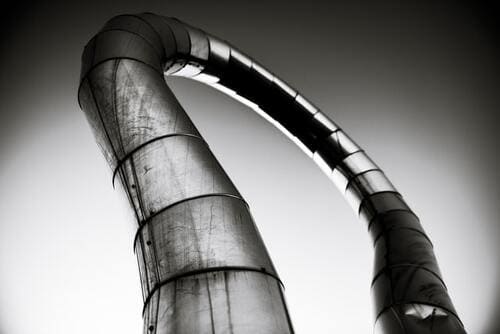It is a well-known fact that fiber optic technology has a wide range of applications in different spheres, starting from medicine and ending with 3D visualization. In particular, it is applied in the oil and gas industry where Fiber Optic Technology solves several issues, including corrosion detection.
Corrosion impact and Fiber Optic Technology
Corrosion is the deterioration of the metal because of its being under exposure to electrochemical molecules that damage its surface and lead to other worse changes. It has already become a real problem for the oil and gas industry. According to the research in 2015, the annual cost amounted to $500,000 in the US. That’s a six-time bigger than the budget for natural disasters. In fact, 33 percent of the cases occurring in the gas and oil industry are connected to corrosion.

That is why scientists from all over the world are looking for new ways to solve the corrosion problem by using modern fiber optic solutions. There are several methods of corrosion detection, but fiber optic technology is still considered to be one of the most cost-effective ones.
FBG sensors to Detect Corrosion
Thanks to modern scientifically developed alloys, the number of corrosion cases has declined. However, there are still challenges connected to contaminating fluids that come into contact with the metals and accelerate the corrosion process. This can definitely lead to the compromising of the structures and lives of the wells over time.
Fiber Bragg grating sensors and distributed sensing systems are considered to be some of the most cost-effective instruments that are created to locate corrosion at an early stage. Distributed sensing pipeline leak detection systems can be divided into two types: distributed acoustic sensing (DAS) or distributed temperature sensing (DTS). They are considered to be the most successful systems and are widely applied in many projects across tens of thousands of kilometers of pipelines.
That’s why FBG sensors are widely applied for corrosion detection in pipes. Fiber Bragg grating sensors transmit the data about the whole picture of the pipe’s integrity. So the corrosion can be noticed at the early stage at different levels. Thanks to the fiber optic technology, it is possible to reduce the detection period and the company losses because of the corrosion cases. Actually, the majority of gas and oil pipelines lie in urban wetlands, mountains, and forests that are the perfect environment for corrosion. And most of the pipes were not prepared for it.
That is why scientists have used the best advantages of distributed sensing to apply the FBG sensors as data lines and detectors. These FBG sensors are constantly reading the internal pipe material conditions caused by corrosion. The Fiber Bragg grating sensors read the thickness of the pipe and transmit the information to the center. They even have the ability to warn when the pipe drops below a 3 mm thickness. Moreover, FBG sensors help in detecting internal changes and events like flow constrictions and liquid accumulations. They can easily detect changes in temperature, noise, and vibration.
All in all, we must conclude that Fiber Bragg grating sensors rank among the most effective corrosion detection methods that allow solving the problem in time.
Optromix is a fast-growing vendor of fiber Bragg grating (FBG) product line such as fiber Bragg grating sensors, for example, FBG strain sensors, FBG interrogators and multiplexers, Distributed Acoustic Sensing (DAS) systems, Distributed Temperature Sensing (DTS) systems. The company creates and supplies a broad variety of fiber optic solutions for monitoring worldwide. If you are interested in structural health monitoring systems and want to learn more, please contact us at info@optromix.com

